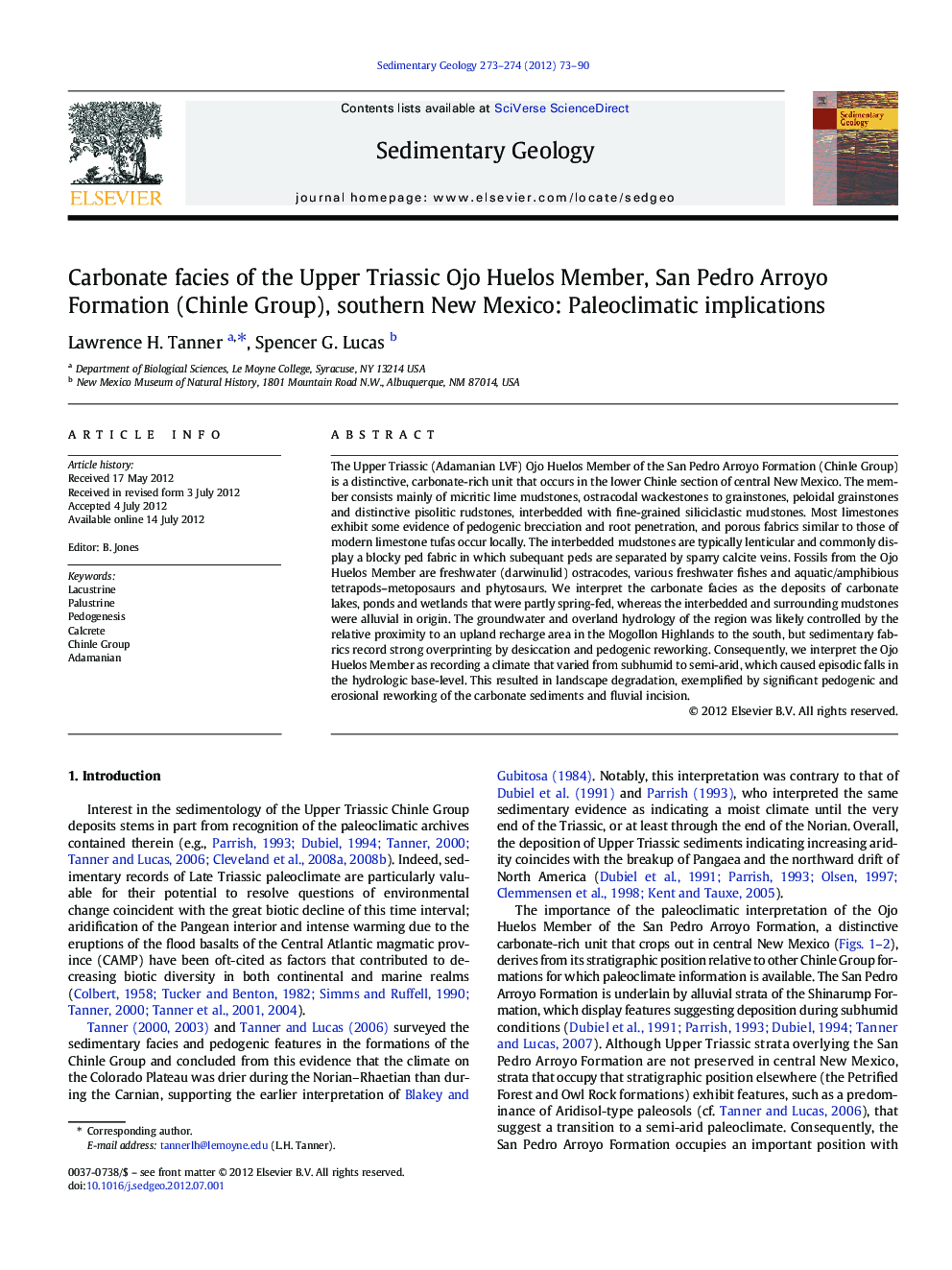| کد مقاله | کد نشریه | سال انتشار | مقاله انگلیسی | نسخه تمام متن |
|---|---|---|---|---|
| 4689714 | 1636085 | 2012 | 18 صفحه PDF | دانلود رایگان |
عنوان انگلیسی مقاله ISI
Carbonate facies of the Upper Triassic Ojo Huelos Member, San Pedro Arroyo Formation (Chinle Group), southern New Mexico: Paleoclimatic implications
دانلود مقاله + سفارش ترجمه
دانلود مقاله ISI انگلیسی
رایگان برای ایرانیان
موضوعات مرتبط
مهندسی و علوم پایه
علوم زمین و سیارات
فرآیندهای سطح زمین
پیش نمایش صفحه اول مقاله

چکیده انگلیسی
The Upper Triassic (Adamanian LVF) Ojo Huelos Member of the San Pedro Arroyo Formation (Chinle Group) is a distinctive, carbonate-rich unit that occurs in the lower Chinle section of central New Mexico. The member consists mainly of micritic lime mudstones, ostracodal wackestones to grainstones, peloidal grainstones and distinctive pisolitic rudstones, interbedded with fine-grained siliciclastic mudstones. Most limestones exhibit some evidence of pedogenic brecciation and root penetration, and porous fabrics similar to those of modern limestone tufas occur locally. The interbedded mudstones are typically lenticular and commonly display a blocky ped fabric in which subequant peds are separated by sparry calcite veins. Fossils from the Ojo Huelos Member are freshwater (darwinulid) ostracodes, various freshwater fishes and aquatic/amphibious tetrapods-metoposaurs and phytosaurs. We interpret the carbonate facies as the deposits of carbonate lakes, ponds and wetlands that were partly spring-fed, whereas the interbedded and surrounding mudstones were alluvial in origin. The groundwater and overland hydrology of the region was likely controlled by the relative proximity to an upland recharge area in the Mogollon Highlands to the south, but sedimentary fabrics record strong overprinting by desiccation and pedogenic reworking. Consequently, we interpret the Ojo Huelos Member as recording a climate that varied from subhumid to semi-arid, which caused episodic falls in the hydrologic base-level. This resulted in landscape degradation, exemplified by significant pedogenic and erosional reworking of the carbonate sediments and fluvial incision.
ناشر
Database: Elsevier - ScienceDirect (ساینس دایرکت)
Journal: Sedimentary Geology - Volumes 273â274, 15 October 2012, Pages 73-90
Journal: Sedimentary Geology - Volumes 273â274, 15 October 2012, Pages 73-90
نویسندگان
Lawrence H. Tanner, Spencer G. Lucas,